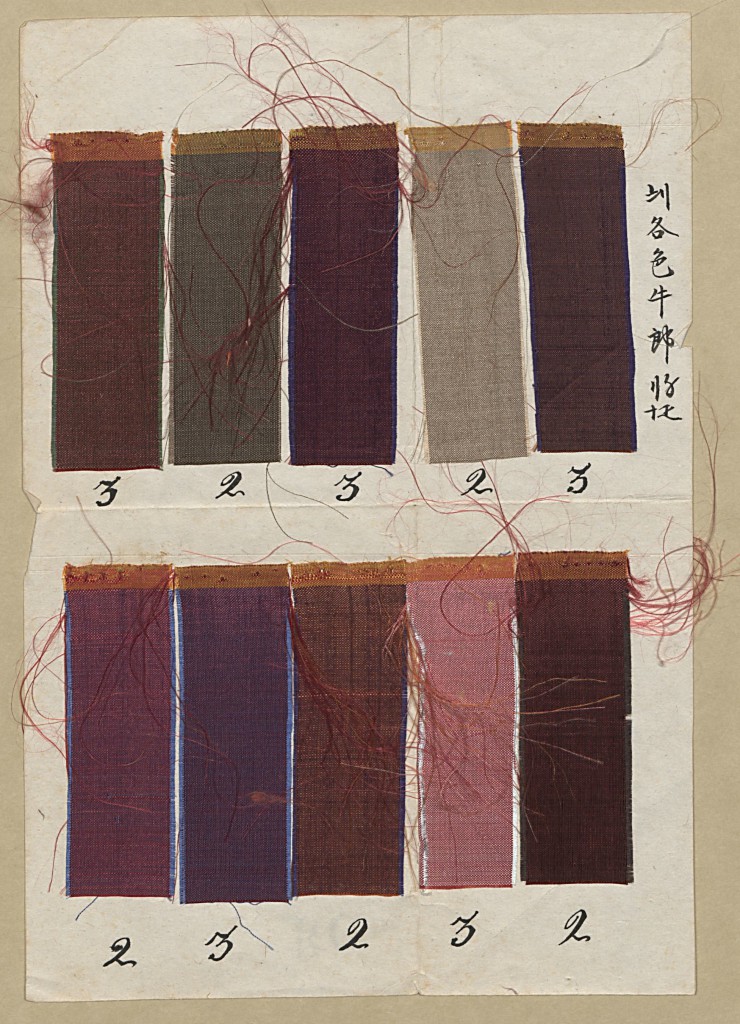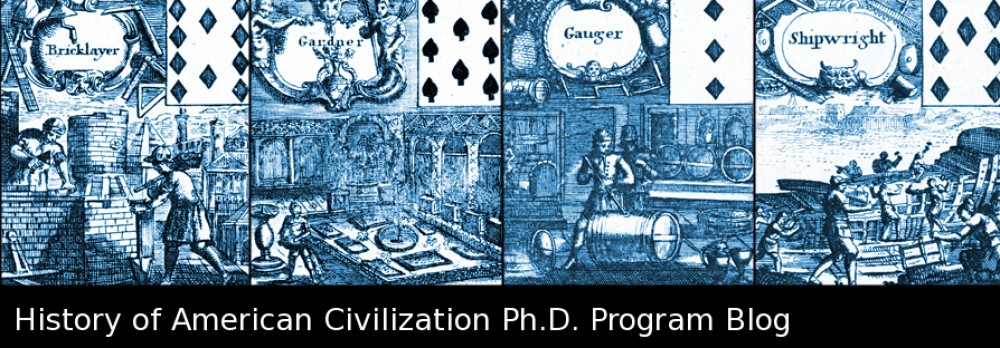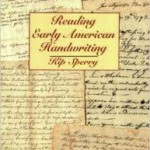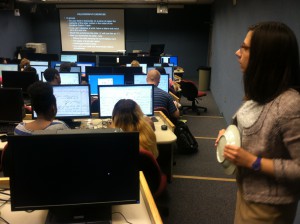When I decided to include a one-day workshop (1.5 hours) on paleography (the fancy word for the study of handwriting) in my World History II survey last summer, I thought my students might never make it through the session (not for lack of smarts but lack of interest – this was, after all, a survey course many students take to fulfill general education requirements). The handwriting is impossible to read, they would say. Why are we doing this, they would ask, explaining that they had never learned how to write in cursive in the first place. (To my surprise, it turned out that most had learned cursive in school, making me wonder to what extent it might be a myth that students don’t learn how to write in cursive anymore). With another group of students, this very well could have happened. But in this instance, it seemed to work. Here’s how.
I wanted my students to get some experience reading historic handwriting. I also wanted them to learn some content associated with the course. Before holding the workshop during one of our regularly scheduled classes, I asked the students to take a look at three examples of historic handwriting in Kip Sperry’s Reading Early American Handwriting (1998).
I chose one from the late nineteenth century, the early nineteenth century, and the mid-eighteenth century. Each sample comes with a transcription, and I tasked the students with simply giving it a try. (This was one of just a few optional reading assignments for the semester). Those who completed it genuinely seemed to get something out of it. One student noted it took them one go to get the words and a second to get the content. They quickly learned the tricks seasoned historians use when they encounter a new hand: matching known letters to similar unknown letters, reading and rereading to get accustomed to comprehending the hand and the syntax, and reading aloud to get the meaning. Armed with this experience, I thought they’d be primed for the workshop.

Silk samples associated with a bill of lading signed by John Latimer, 60×27, Col. 235, Downs Collection of Manuscripts and Printed Ephemera, Winterthur Library
When they arrived the day of the workshop, I gave them a brief lecture on the so-called Canton Trade System, or the vibrant and sometimes contentious trade between China and the West from about 1750-1840.

Detail of the letter my students transcribed from John Latimer, Sept. 1819, 60×1.9, Col. 235, Downs Collection of Manuscripts and Printed Ephemera, Winterthur Library
We talked about the exchange of silk and spices, silver and lacquered furniture, opium (which ultimately led to the end of the Canton trade, a subject we broached in a later class), and tea. I even brought in some nineteenth-century Canton porcelain from my own collection to make this all a little more concrete.
Then, I gave them ample time to transcribe a letter (in groups) written by Delaware merchant John Latimer (1793-1865) (always helps to make local connections) to a business associate about trading specific commodities in Canton. I had the students take a look at a scanned version of the letter on large-sized computer screens with zoom capability in a lab on campus.
The letter, which I had identified after spending a glorious day trolling the Downs collection at the Winterthur Library and which had been scanned by a Winterthur librarian, was a hit. The students made it through nearly every word, struggling almost exclusively with the most arcane words (such as supercargo, or the person who served as the the ship’s owner’s representative) and syntax. They really gained an appreciation for the intricacies of what trade involved in the early nineteenth century–from how merchants communicated (lots of hand-written letters, sometimes in duplicate or triplicate) to what merchants had to know about preferences for certain commodities to deciding whether to trade with cash or goods.
And while they learned from the letter itself about trade and globalization (a major course theme), the letter also spurred additional questions–many more than did the average lecture-discussion. How did English-speaking Americans communicate with the Chinese, they wondered. Why was insurance such a concern? And what remains the same today about trade with China and other countries around the world? Learning through doing definitely seemed to inspire deeper thinking.
I didn’t know whether this workshop would work in the end, but I’m glad I took the risk. Despite their initial trepidation, I think the students enjoyed it too. And the next time they encounter old-fashioned manuscript writing (whether it’s that of their bosses or that of a historic diary), hopefully they’ll recall some of the skills they learned that day…and why an insect called cochineal was so valuable.
Resources
The Downs Collection of Manuscripts and Printed Ephemera at the Winterthur Library has several collections related to the Canton System. I’d like to extend special thanks to Jeanne Solensky for assisting me with identification of these collections and for scanning a handful of documents for the class. In addition to the Latimer Family Collection, see also Fol 153, an 1804 sea journal that provides insight into how to deal with specific Chinese merchants. For other examples, search “China trade” in WinterCat.
The Massachusetts Institute of Technology (MIT) and the Peabody Essex Museum (PEM) partnered to make an excellent online learning module called the Rise & Fall of the Canton Trade System. If I hadn’t done a paleography workshop addressing the CTS, I would have assigned parts of this website for reading homework.
I used a lot of images from online museum collections for my entire course. For this particular class, I found collections at the Peabody Essex Museum and London’s National Maritime Museum to be most helpful.
About the author: Nicole Belolan is a Ph.D. Candidate in the History of American Civilization program at the University of Delaware. She is writing a dissertation about the material culture of physical disability in early America. Nicole is also a graduate assistant for Sustaining Places, an IMLS-funded initiative that is dedicated to providing hands-on, practical resources for small museums. This blog post was original published at her professional web site. Nicole tweets @nicolebelolan.



